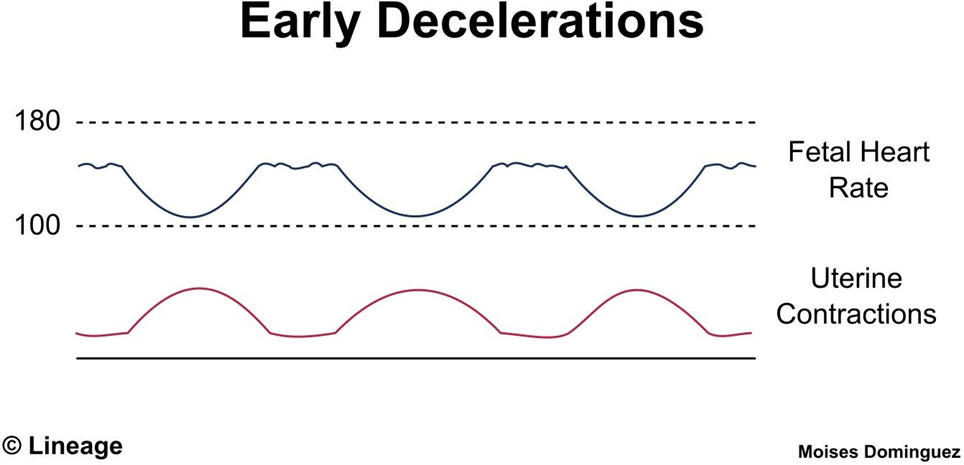A nurse is assessing a client who has a complete heart block and is receiving transcutaneous pacing. Which of the following findings indicates to the nurse that the treatment is effective?
Heart rate greater than 60/min
Pedal pulses 2+
Pacer spikes after the QRS complex
Distended jugular veins
The Correct Answer is A
- A: A heart rate greater than 60/min indicates that the transcutaneous pacing is effectively maintaining a heart rate within a normal range, which is crucial for adequate cardiac output and systemic perfusion.
- B: While 2+ pedal pulses indicate good peripheral perfusion, they do not directly reflect the effectiveness of transcutaneous pacing in treating complete heart block.
- C: Pacer spikes should appear before the QRS complex to show that the pacing stimulus is being delivered appropriately. Spikes after the QRS complex suggest that the pacing is not capturing the heart effectively.
- D: Distended jugular veins would be more indicative of heart failure or fluid overload and do not directly relate to the effectiveness of pacing therapy.
Nursing Test Bank
Naxlex Comprehensive Predictor Exams
Related Questions
Correct Answer is D
Explanation
A. Administer an antitoxin: There is no specific antitoxin available for anthrax. Treatment primarily involves antibiotics and supportive care.
B. Quarantine the client: Quarantine may not be necessary unless the client is confirmed to have an active infection or poses a risk of spreading the disease to others.
C. Monitor the client for a productive cough: While respiratory symptoms can occur in inhalation anthrax, monitoring for a productive cough alone may not be sufficient for management.
D. Begin prophylactic treatment with ciprofloxacin: Prophylactic antibiotic treatment with ciprofloxacin or doxycycline is recommended following exposure to anthrax to prevent the development of the disease.
Correct Answer is A
Explanation
A.
A. Early decelerations are typically benign and occur due to head compression during
contractions. They mirror the uterine contraction pattern and are not usually associated with fetal compromise.
B. Fetal hypoxia is not typically associated with early decelerations, as they are considered a normal response to head compression during labor.
C. Abruptio placentae refers to the premature separation of the placenta from the uterine wall and is not directly related to early decelerations.
D. Postmaturity refers to a pregnancy that extends beyond 42 weeks gestation and is not directly related to early decelerations.

Whether you are a student looking to ace your exams or a practicing nurse seeking to enhance your expertise , our nursing education contents will empower you with the confidence and competence to make a difference in the lives of patients and become a respected leader in the healthcare field.
Visit Naxlex, invest in your future and unlock endless possibilities with our unparalleled nursing education contents today
Report Wrong Answer on the Current Question
Do you disagree with the answer? If yes, what is your expected answer? Explain.
Kindly be descriptive with the issue you are facing.
